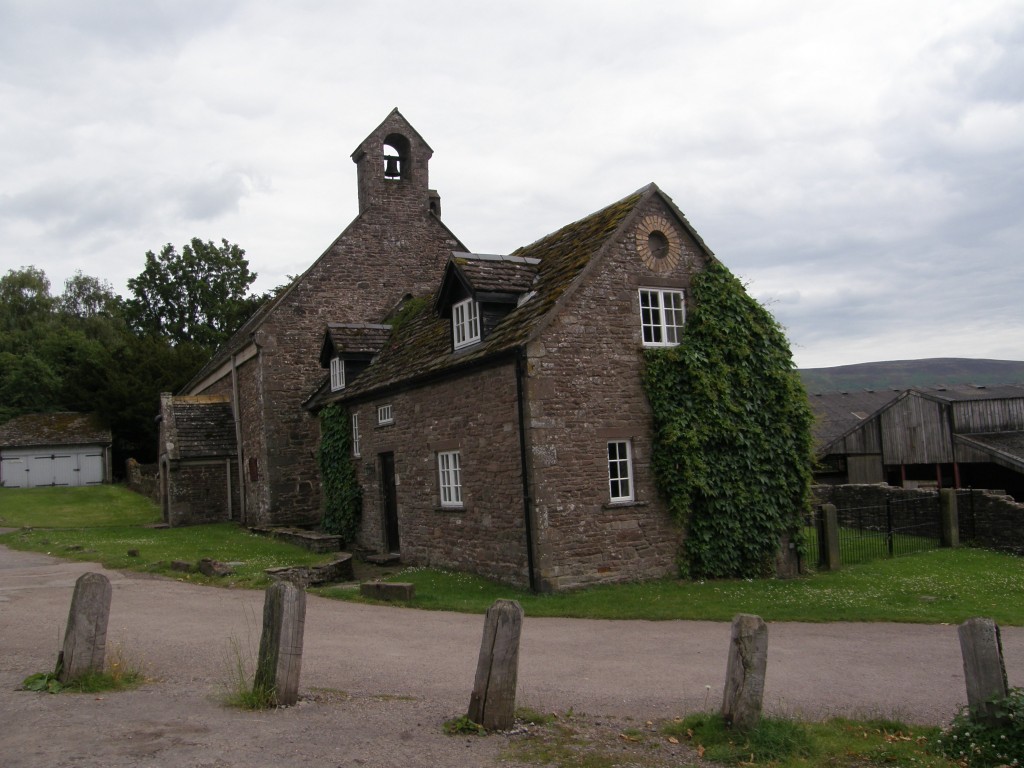This post concludes the tale of this day begun in Part 1 and continued in Part 2.
Llanthony Priory was a monastery of Augustinian Canons nine miles south of Hay-on-Wye. St. David is said to have lived in the area as a hermit, but this tradition lacks confirmation.
The story of the Priory is that around the year 1100 the ruins of a chapel and cell, supposed to have been that occupied by St. David, were discovered by a retainer of Hugh de Lacy, Baron of Herefordshire, named William. He thereupon decided to quit the world and become a hermit himself. He was later joined by Ernisius, chaplain to Queen Maud, wife of Henry I. These two anchorites became famous and their story reached Baron de Lacy, who in 1107 founded and endowed a monastery for them, dedicated to St. John the Baptist. The rule of the Canons Regular of St. Augustine was adopted. In the course of time, the severity of the climate, the poverty of the soil, and the persecution of the Welsh natives combined to make life there impossible. In 1134 the entire community, numbering about forty, abandoned the monastery and took refuge in the palace of Robert, Bishop of Hereford. After two years a new monastery was built for them near Gloucester by Milo, Earl of Hereford, which was called Llanthony Secunda. Only a few canons lived from time to time in the original monastery, and both houses were governed by one prior, who resided at Gloucester.
The buildings at Llanthony fell gradually into decay and passed into private hands when Henry VIII dissolved the monasteries in 1539. In 1807 the property was bought by Walter Savage Landor. It still belongs to his descendents, the habitable portion of it having been added to and converted into an inn during Queen Victoria’s reign. The church is in ruins, but the western towers, part of the central one, and some of the nave piers and arches are standing.
Here are a few pictures of Llanthony Priory taken today, 11 July 2011:
And this is the Inn built into the Priory ruins by the Landor family:
There is also a functioning Anglican Church in Wales parish church on the site of the Priory, St. Davids, Llanthony. The structure first seen in this picture is a cottage attached to the church, presumably intended to be the vicarage:
This is the interior of the church:
Notice the pulpit … it is built into the wall and cannot be accessed from the congregation’s side of a wall and arch that separates the congregation from the choir and chancel.
I entered the pulpit through this door. I almost couldn’t fit in and getting back out was a really spine-bending challenge!
All things considered, it was a good day in Wales. After visiting the parish church, I made my way back to the B&B in Hay-on-Wye by way of a “single track lane with passing areas” about which I’ve written earlier.












Your third photo of the Priory, had me wishing I could just sit on the grass inside that section for hours. Has a very spiritual feel to it, all the way across the Big Pond.
Beautiful. The Priory pictures are just lovely.